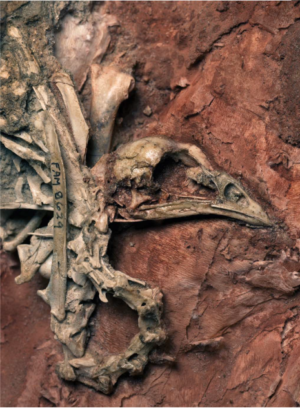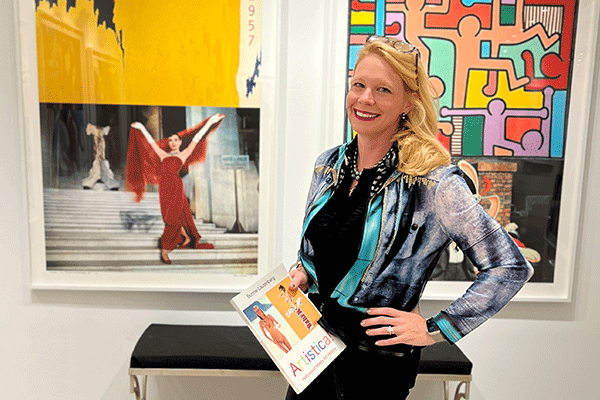
It is not uncommon for a person to have a child named in one”™s honor, but few people can claim the privilege of having a prehistoric bird named after them. And that”™s the unlikely tribute given to Suzanne Lio, managing director and chief operating officer of Greenwich”™s Bruce Museum, who inspired the name Centuriavis lioae of a species identified by her colleagues, museum curator Dr. Daniel Ksepka and curatorial associate Kate Dzikiewicz.
Centuriavis lioae was a member of the Phasianidae family that lived roughly 11.4 million years ago in Nebraska ”” but at the time the day, the region was a savanna-type environment and not the farmland of today”™s state. The bird”™s neighbors back in the day were the prehistoric forerunners of the rhino and camel, and its contemporary descendants include the grouse and turkeys.
The name Centuriavis means “century bird” ”” and that”™s a bit of paleontologist humor, as the fossil was collected nearly a century ago in 1933 but was only recently identified as a hitherto unknown species.
“It may come as a surprise that such a beautiful and nearly complete fossil could go unstudied for almost 100 years” said Ksepka. “This isn”™t a unique case ”” there are relatively few paleontologists in the world, and only a small percentage of those study birds. Many other important fossils are surely sitting in cabinets waiting to be studied or even still inside their plaster jackets waiting to be freed from the rock.”
In this case, the fossil of Centuriavis lioae ”” which consisted of the bird”™s head, neck and wing ”” had been in the Bruce”™s collection for years before it was retrieved and studied. Kspeka praised it as “absolutely one of the most gorgeous fossils I”™ve ever seen ”” it”™s just so perfectly preserved. The neck is kind of posed and the wing bones on one side are still attached. And on the other side, they came off, so you can study them in 3D ”” it”™s like it”™s posing for the camera.”
Kspeka added the preservation was miraculous because fossils “are often crushed, or you”™ll often have only a small percentage of the skeleton. In this case, we have the entire front half. There are no legs ”” for some reason, the legs got lost ”” but we have the wings and the skull and the vertebrae and the shoulder bones. And it”™s in really, really good shape for a bird because the bones of birds are very hollow.”
Dzikiewicz added that after the bird was identified as a previously unknown species, the question arose on what to name it.
“We”™ve been thinking about what to name this bird for years,” she said. “We went through a variety of different options, the pandemic happened, and we decided it was time to publish it.”
The announcement of Centuriavis lioae was made on Oct. 17 in the Journal of Paleontology, with Dzikiewicz singling out Lio”™s work at the museum and her ability to get complex tasks done quickly and efficiently, adding that “she”™s been one of our best friends at the museum.”
As for Lio, she considered the naming “a complete honor” and considered herself being “in the right place at the right time.” Lio also joked that sharing the news has been complicated because “I have friends who still don”™t know about this, and how do you bring it up in conversation?”






















